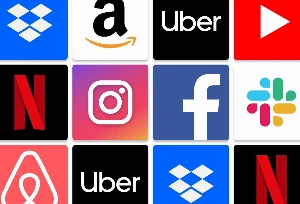With the rise of high tech already operating all around the world, augmented reality is having its day. AR is on the up and we've seen educational organizations like the Institute of Imagination experimenting with the latest consumer tech craze to take the learning experience to a new level.
A steep surge in AR leaves no room for doubt — the e-learning industry will never be the same. So, what does the future hold?
What is augmented reality?
Let’s explain what augmented reality (AR) is. There are two worlds — real (you’re a part of reality) and virtual (that is one in your smartphone). What does happen whenever you want to take a picture? You see a real world in your phone camera. However, if you’re using AR app, you’ll see a virtual object in a real world. Virtual objects are called 3D models, which are artificial models made in a virtual realm and can be shown on the real world through the lens of the camera.
Now, let’s see what augmented reality in education is.
#1 Practical training for medical colleges and universities
Imitation has always been a prime focus of medical training — trainees get hands-on experience in an artificially created environment by working with mannequins and special software. Augmented reality extends in education realistic surroundings and creates another world where they can practice medicine.
Augmented reality provides an incredible way for students to develop various medical skills such as surgical training and observation. Simulated surgeries work as real-world experiences and provide efficient hands-on training that students don’t typically get unless they enter a surgical residency. Moreover, it gives an opportunity to practice and perfect more common lifesaving procedures, make quick decisions, and get real-time feedback on their performance. AR training simulators enlarge the learner’s knowledge base, improve decision making, and teach teamwork. Surgery is not the only situation that can be simulated by means of AR. Human anatomy exploration simulations can also aid medical students to investigate the human nervous system, cardiovascular system, muscles, and bones.
How does it actually work? For instance, Echopixeltech has developed augmented and mixed reality clinical applications to assist physicians to plan surgical and interventional procedures to treat congenital heart defects. True 3D is an augmented reality platform that enables learners to interact with virtual patient anatomy. It lets users of Android mobile devices easily preview, place, view, and interact with web-hosted 3D models of human body in their environment.
#2 Augmented reality helps future engineers
Augmented reality depicts complex parts and structures of an engineering product and allows students to gain a deeper understanding of how gear works and spot any flaws or potential risks before implementation within a safe environment. AR training simulators are widely used for learning prototyping, so there is no need to build a physical prototype. Industries that already have discovered the untapped potential of training applications and simulations will prefer utilizing AR as it allows them to safely work through procedures, again and again, giving a chance to physically perform actions similar to those they would do after the study.
#3 AR e-learning helps teachers to explain concepts or random entities with 3D objects
It always has been challenging to explain complex objects, especially if the words and pictures are the only instruments tutors have. With the help of technological advancements, teachers can attach AR experiences to objects of curiosity (3D life-size model of anн object, or concept) from where they can learn about the object via hovering a phone or tablet over the object. This kind of learning is amazing to answer the natural curiosity of kids. Explaining the concept of rotation and revolution using the example of the solar system can be simply clarified using augmented reality technology.
To give you an idea of how it works, we recommend checking out how the Blippbuilder tool works. This invention has been even used by museums.
#4 AR education offers new interactive books
Today, we spend our time with our laptops and smartphones more than with books. What is more, we read books via our phones. Yet augmented reality goes even further and expands usual books into 3D experiences that make story or concept learning a lot of fun for the students.
The Blippar company has created a product that can make any page interactive after the users hover their devices over the picture.
Wrapping up
The bright future of e-learning is in the hands of augmented reality. Training that has been possible only in real environments is now available in any place thanks to 3D modeling and AR. Making a studying process fun for kids is no longer a tedious process. Teachers can download an app and explain concepts in the most creative way possible.
The more inventions intervene into our life the more we understand that the life won’t be the same anymore. Industries like engineering and healthcare have already been altered by technological breakthrough. Primary schools are just in the beginning of their new journey that will enhance old-fashioned e-learning methodologies.
If you want to know how AR can improve your e-learning system or already have a project in mind, let us know! We’re glad to invest in your success.





_1758804763-small.webp)
